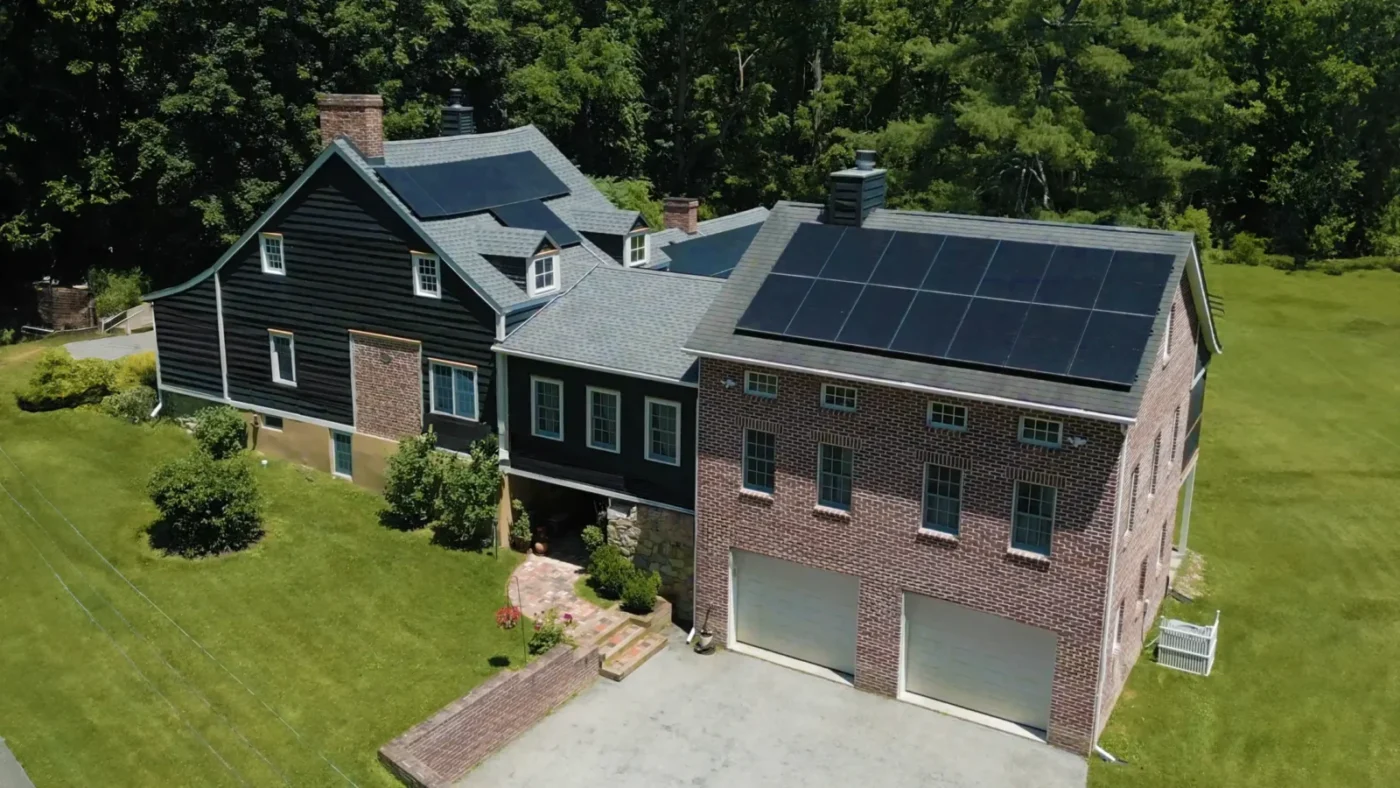It’s quite common to think that solar panels don’t work well during colder months… especially in New York. Not only do we see less sunlight in the winter, some areas in New York get hit with over 200 inches of snow each year.
But here’s the truth: solar panels absolutely work in winter. And even if they produce less from November through March, your system, when designed correctly, is built to handle that automatically. Below, we’ll clear up the myths and explain why winter is no reason to worry about solar performance.
Fact Or Myth: Solar Doesn’t Work in the Cold
It may come as a surprise, but solar panels don’t need heat to produce electricity. Your solar system generates power by converting sunlight, not temperature, into usable energy. That means even when it’s 25°F outside, your panels are still working as long as sunlight reaches them. The weather outside has very little impact on how much your system produces. What truly matters is how much direct sunlight reaches the panels each day.
In fact, it’s extreme heat, not cold, that causes solar panels to degrade over time. In places where temperatures regularly soar above 110 degrees, panels are constantly exposed to stress that can lead to premature wear and reduced efficiency.
On the other side of the spectrum, New York’s moderate climate actually gives your solar system a long-term advantage to perform more efficiently and last longer. Lower-temperature weather conditions improve electrical conductivity, allowing panels to convert sunlight into power more efficiently.
So while the winter sun may feel weaker and days shorter, your panels will continue to generate energy throughout the colder months, often more efficiently than you’d expect.
What If My Panels Don’t Produce Enough Energy?
While solar panels continue producing energy in the winter, that doesn’t mean you’re completely off the grid. The grid still plays an important role by supplying power when your panels aren’t producing enough.
Solar production naturally drops during the colder months. Depending on where you live in New York, you can expect anywhere from a 15% to 40% decrease compared to summer. But that’s expected and already factored into your system’s design.
The goal isn’t for your panels to cover every kilowatt every single day, but to produce enough over the course of the year to offset most of your annual energy usage. Many homeowners see strong savings even with systems that don’t cover 100% of their annual needs. As a general rule, systems with more than eight panels often generate enough power to make a noticeable difference.
This is where net metering comes in. During spring and summer months, your panels often produce more electricity than you need. That excess power goes back to the grid, earning you energy credits. In the winter, you use those credits to offset the energy your system doesn’t produce, keeping your costs steady and predictable year-round.
And if you’ve added a home battery, you can store excess energy during peak sunlight hours and use it later at night, during snowstorms or outages.
In short, even when sunlight is limited, your home stays powered, connected, and saving.
What About Snow?
Every New Yorker without solar panels has probably at least once thought about this question.
It’s true that heavy snow can temporarily block sunlight from reaching your panels. But the key word here is temporarily.
Solar panels are designed to handle snow. Most systems are installed at an angle, helping snow slide off naturally once the sun hits it. And because the surface of a solar panel is dark and heat-absorbing, even weak winter sunlight helps melt snow faster than it melts off your roof shingles.
If there’s a light snow dusting, your panels will continue to generate electricity because sunlight can still penetrate thin snow layers. And if a heavier storm hits, your system will resume production quickly once the panels are exposed again.
There’s no need to brush them off manually or climb up to clear snow which we never recommend for safety reasons. In fact, the occasional snowfall can even help keep panels clean by removing dust and debris that might have accumulated during the fall.
Snow may cause a short delay in production, not performance. It’s temporary and already taken into consideration when designing every solar panel installation in New York.
Real Results From New York Homeowners
We’ve monitored thousands of solar systems across New York and the results are consistent: solar panels work year-round in every region of the state. Even in January and February, when days are shortest, most homeowners still see their systems produce about 60% of their average capacity. With New York’s net metering program, that production is usually enough to cover their usage and keep their electric bills low.
For example, a homeowner in Buffalo, NY with a 10kW solar system might generate around 1,000 kWh in April and 650 kWh in January. Thanks to system overproduction during the longer summer days and net metering, those extra credits carry through the winter months, often leaving them with little to no electric bill by year’s end.
Homeowners who add battery storage in New York take things even further. Their systems store excess energy for use during power outages caused by storms, ice, or grid maintenance. Once their battery is recharged, any additional power continues flowing back to the grid to build credits with their utility provider.
Why System Design Matters More Than Weather
The biggest factor in winter solar performance isn’t the weather or temperature, it’s whether your system was designed right. A properly engineered solar system setup considers:
- Roof’s tilt, shading, and orientation
- Local sunlight hours and snowfall data
- Regional factors unique to each part of New York
Every system we install is designed with New York’s changing seasons in mind. We carefully balance energy production across different weather patterns and regional climates, knowing that what works for a home in Buffalo may not perform the same way for one in Westchester County or Long Island. Our engineering team studies local sunlight data, average snowfall, and roof angles to ensure each installation performs efficiently all year long.
At Empire Solar, we engineer solar systems for long-term balanced year-round performance. We design each project to produce steady, predictable savings through every season so homeowners can enjoy reliable energy and lasting peace of mind.
Final Thoughts
Winter doesn’t stop solar panels from working, it simply changes how they perform. But that doesn’t matter when your system is designed the right way. A properly designed system continues to produce power through every season, even on the coldest days of the year.
When you combine smart system design with net metering, you can expect year-round savings that aren’t impacted by changes in the weather. The extra energy your system produces during the spring and summer helps offset shorter winter days keeping your energy costs predictable month after month.
Solar remains one of the most reliable investments New York homeowners can make. It cuts electricity bills, protects against rising utility rates across New York, and increases your property value.
See How Solar Works On Your Home
Find out how much solar could save you through every season. Get your free Solar Savings Report →, personalized for your home, your utility, and your location.


